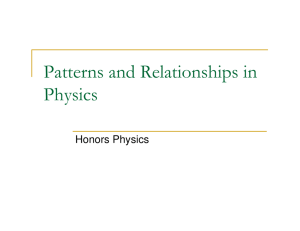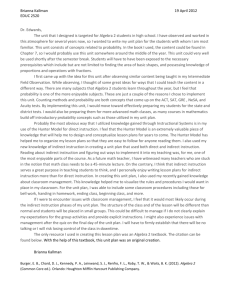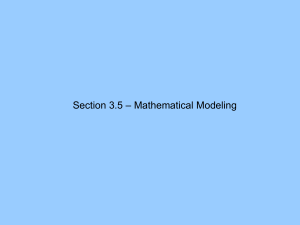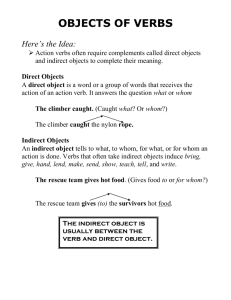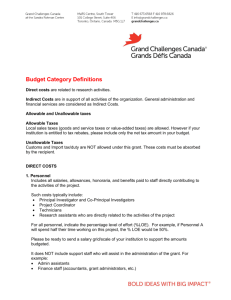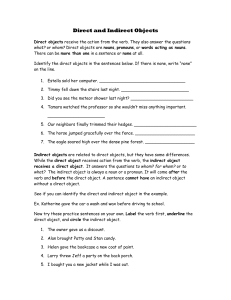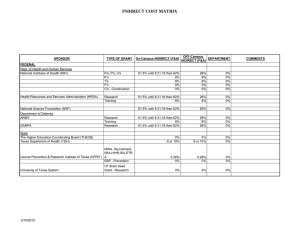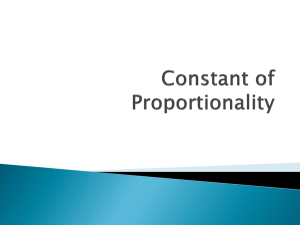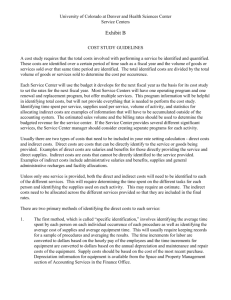1: 6: Direct and Indirect Variation
advertisement
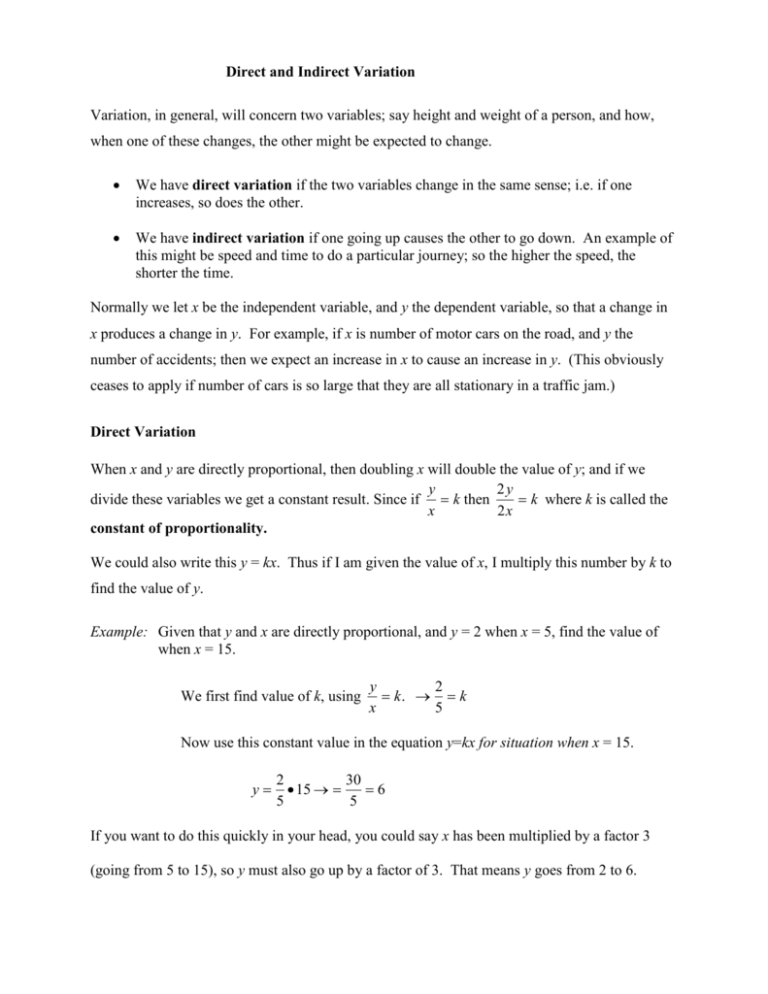
Direct and Indirect Variation Variation, in general, will concern two variables; say height and weight of a person, and how, when one of these changes, the other might be expected to change. We have direct variation if the two variables change in the same sense; i.e. if one increases, so does the other. We have indirect variation if one going up causes the other to go down. An example of this might be speed and time to do a particular journey; so the higher the speed, the shorter the time. Normally we let x be the independent variable, and y the dependent variable, so that a change in x produces a change in y. For example, if x is number of motor cars on the road, and y the number of accidents; then we expect an increase in x to cause an increase in y. (This obviously ceases to apply if number of cars is so large that they are all stationary in a traffic jam.) Direct Variation When x and y are directly proportional, then doubling x will double the value of y; and if we y 2y k where k is called the divide these variables we get a constant result. Since if k then x 2x constant of proportionality. We could also write this y = kx. Thus if I am given the value of x, I multiply this number by k to find the value of y. Example: Given that y and x are directly proportional, and y = 2 when x = 5, find the value of when x = 15. We first find value of k, using y 2 k. k x 5 Now use this constant value in the equation y=kx for situation when x = 15. y 2 30 15 6 5 5 If you want to do this quickly in your head, you could say x has been multiplied by a factor 3 (going from 5 to 15), so y must also go up by a factor of 3. That means y goes from 2 to 6. Direct and Indirect Variation Indirect Variation. We gave an example of inverse proportion above, namely speed and time for a particular journey. In this case, if you double the speed, you halve the time. So the product, speed x time = constant. In general, if x and y are inversely proportional, then the product xy will be constant. xy k or y Example: k x If it takes 4 hours at an average speed of 90 would it take at 120 km to do a certain journey, how long hr km ? hr k = speed • time = 90 • 4 = 360 (k in this case is the distance.) Then time k 360 3 hours. speed 120 To do this in your head, you could say that speed has changed by a factor change by a factor, 3 , so time must 4 3 . However, for the usual type of problem, go through the steps I outlined 4 above. I hope these examples have made the idea of variation (both direct and inverse) reasonably clear. From Ask Dr.Math @ MathForum.com




